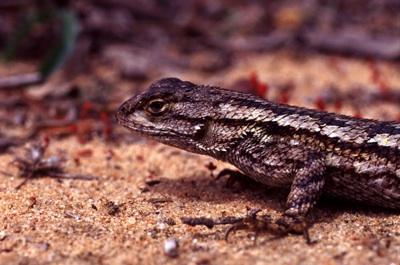It's long been known, and feared, that habitat fragmentation can create biological islands that require heavy human intervention to prevent genetic dead-ends.
That was the driver between the Yellowstone-to-Yukon initiative, the dilemma faced by the Florida panther, and now being displayed at the Santa Monica Mountains National Recreation Area in California.
Recent studies by National Park Service and U.S. Geological Survey researchers at the NRA looked at three commonly found species of lizards and a small songbird, the wrentit, and how they were being affected by urbanization and fragmentation of the NRA. In approaching their task, the researchers compared "the DNA of animals collected throughout the now-isolated scrubland patches and parks surrounding Thousand Oaks and State Route 23 — an area that was a single, mostly contiguous wilderness only 50 years ago."
"They found that animals in these 'habitat islands' have unique genetic profiles, so that individuals even in closely neighboring patches are unlikely to be related," a park release explained. "Additionally, animals within the smaller or more isolated habitat patches are closely related to one another. The data showed that the populations of lizards and wrentits have become disconnected and isolated as their natural habitats became divided and fragmented by roadways and housing.
"As the animals are unable to cross these urban barriers, they begin to inbreed and lose their genetic diversity. Decreased genetic diversity may increase a species’ chance of
extinction."
The researchers findings were published in the journal PLoS ONE.
“What’s interesting is that these four species are abundant and widespread in Southern California,” says NPS researcher Katy Delaney, the lead author of the study. “But if even these species are being negatively impacted by urban barriers, then what’s happening to the rarer, more specialized species in this region?”
This study is among "the first concrete evidence of significant population genetic changes caused by habitat fragmentation, especially within a small region and over a short time period," says study coauthor Robert Fisher of the USGS Western Ecological Research Center.
The researchers specifically chose these lizard and bird species because they represent different ecological niches and range of mobility within the scrubland ecosystem. For example, Western skinks tend to be secretive debris dwellers, while Western fence lizards are fast-running, more mobile animals.
And yet, they found the same pattern of genetic isolation in all four animals, even a flying species like the wrentit. “We assumed birds could fly across urban barriers and remain a continuous population, but this was not the case, at least with a smaller sedentary bird like the wrentit,” says Ms. Delaney.
The research article is publicly available at http://dx.plos.org/10.1371/journal.pone.0012767. The study was a joint project of the USGS Western Ecological Research Center and the National Park Service Santa Monica Mountains National Recreation Area. Funding was provided by the NPS Natural Resources Preservation Program with the assistance of the University of California Cooperative Ecosystems Studies Unit and University of California-Los Angeles.


 Support Essential Coverage of Essential Places
Support Essential Coverage of Essential Places







Add comment